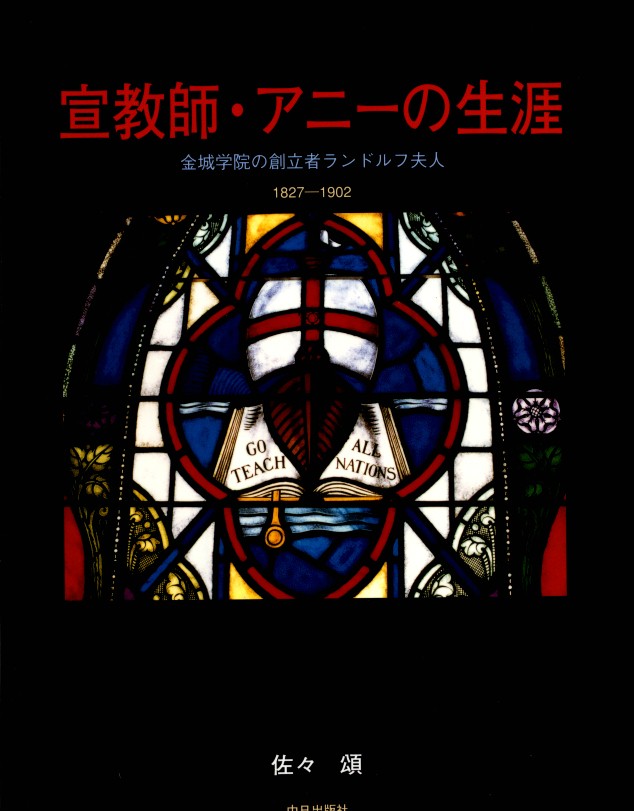
Inside the cover was a letter from one of Kinjo Gakuin's faculty, Mr. Sho Sasa. It explained his purpose in publishing this book and I would like to share part of his letter with you. "In 1994, I published, in English, the book, Mrs A.E. Randolph, the life of a Missionary. This current publication, though visually similar to the former publication, is vastly different in terms of the content of the story. This book was written with the Japanese reader in mind. Through a biography of Annie, I have emphasised two main themes:
1.What is the life of a missionary? Their values, their hardships, their difficulties, their sorrows?
2. What are the roots of The Presbyterian Church in the United States' mission work in China?
I began my teaching career at Kinjo Gakuin High School 40 years ago. This was right after the war and life in Japan was very severe; no houses, no clothes, no food. Most of the foreigners in Nagoya were United States soldoers. However, Mrs. Smythe, Miss Archibald and Miss Fultz, missionaries to Kinjo Gakuinwho were evacuated to the United States during the war, had returned to Nagoya and to Kinjo. These three missionaries had a great impact in the lives and in the life of the people of Nagoya, in the Kinjo community, and in the churches.
I was also impressed by their mission work, which resulted in my studying the Bible in English. However, I have been saddened that, over time, the mission work of Mrs. Randolph, who was one of the pioneers in the internationalization of Nagoya, and of the other missionaries who followed her in the Meiji, Taisho and Showa eras have been all but forgotten. Therefore as my life's work, I decided, 20 years ago, to write this series as one method of repayment for their many years of dedicated mission work.
My prayer in writing this book is that Christians and non-Christians alike will come away from this book with the realization that missionaries are human just like you and me. If so my work of 20 years will be rewarded. Sincerely, Sho Sasa.
As a way of showing the appreciation of the Presbyterian Missionary Community for his understanding and love for these missionaries, I asked Mr. Sasa if the Japan Mission Home Page could review the book for our readers. He gave me his wholehearted approval. Please understand that all of the pictures ( Please understand that most of the scanned images in this Home Page are greatly reduced and the quality is greatly reduced as a result) and text are his personal property used with his approval. If you would like to excerpt any of this text or use any graphics for any purpose, please contact Mr. Sasa for his permission as he holds the copyright.
Mr Sasa made 4 trips to the United States to research this book and to gather photographs. As his hobby is photography, all of the phographic copy and work is his own.
This book shows diligent research and a mind which was constantly on the lookout for information which would to explain the background of missions and missionaries. In addition to trips to America, Mr. Sasa spent time in China and in Europe researching the backgrounds of the missionary movement and of Annie Randolph and her family. I am amazed at the information he managed to compile. I am sure that there is much more which he must have regretfully had to omit in the telling of this story.
As Mr. Sasa said above. The cover of this book looks very much like the English volume published earlier. As soon as you open the book, however, you aware that not only is it written in Japanese with the exception of captions in English to retain the spelling and pronunciation of foreign (English) names, but has an entirely different flavor from the English volume.
You can tell from the pictures which are included that his purpose is to be much more personal in the telling of the story of missionaries and their families, but is concerned to give much more background information than was practical in the earlier work.
He begins his story in Virginia, the home of the Randolphs and then shows where that family came from in Europe and discusses the Christian and cultural backgrounds that called Annie to become a missionary. (I am not including the English captions to these pictures, because my purpose is to introduce, but you will want to examine them for yourself because they tell an extremely fascinating story. )
You will also find fascinating the fact that Mr. Sasa sees a relationship between the missionary movement of Europe and America but is also aware of the differences in the way that this movement was received in the various countries of the world. He particularly focuses on the East, and his next step in telling this story took him to China.
It was interesting to hear him tell how he came to locate the existence of the name he had come across in this family's journey to Japan. Because of the sister city relationship of Gifu with clothing manufacturers in China He learned that the Chinese Characters "Ten (heaven) Sui (water) Do (Building)" still existed, and he was able to visit the location of the church and includes these related pictures in the book.
China had received the missionaries very warmly Mr. Sasa discovered.
There were many problems which the Missionary faceed in China, but the word of God had been received and churches were growing. This is a picture of the Presbyterian Mission in 1902, meeting in Shanghai! In the caption, we discovered China Mission names we knew quite well, including some of Mary Kay's relatives!
When Mr. Sasa's attention returns to Japan, he first sets the stage showing how the first Protestant missionaries prepared the way for later missionaries. He begins with the story of Hebon, Brown, Fullbeki, and Ballagh. This was during a time when Japan was not very popular because of their imperialistic ideas and actions. He shows how a missionary already close to 50 years of age would consider going to a place at that time considered so undesirable.
I know that you cannot read the names in this scanned image, but I include the unreadable names to show how well documented the pictures are, using in many cases both English and Japanese.
Now that I have flitted all over the place in tempting you to get this book in your hands, I think I should point out that Kinjo, now a full University, Junior College, High School, Junior High School and Kindergarten program, and still expanding, was begun with three students, and Ms. Randolph was only in Japan 4 years. That does not mean that it was easy. That does not painful at times and frustratingly slow. There were times when missionaries felt it was a failure. But with hands to water and hands to pray and hands to give, it prospered under the guidance of the Holy Spirit and is still serving His kingdom in Japan.
This is were it all began. It began with a cross.
But it did not end here:
See, It is still going on!
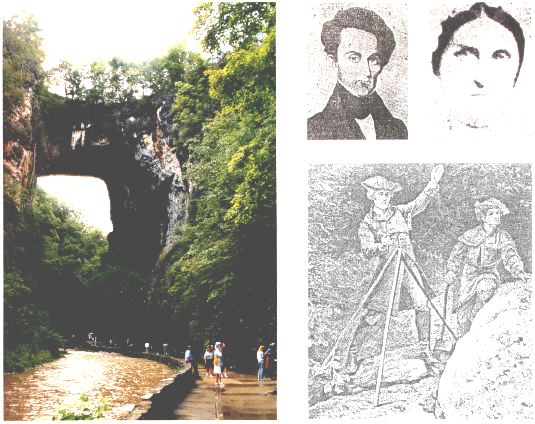
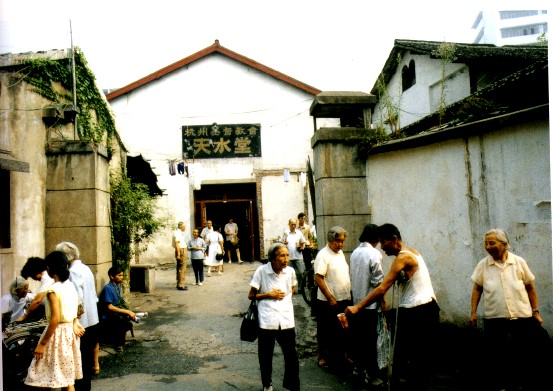
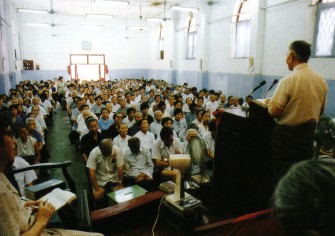
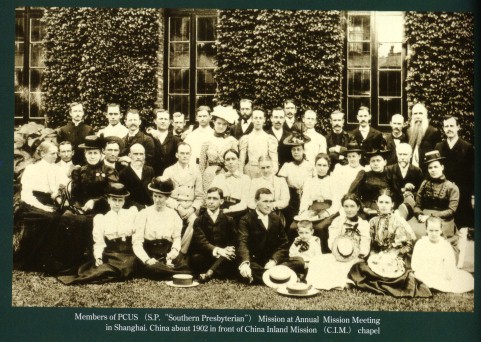
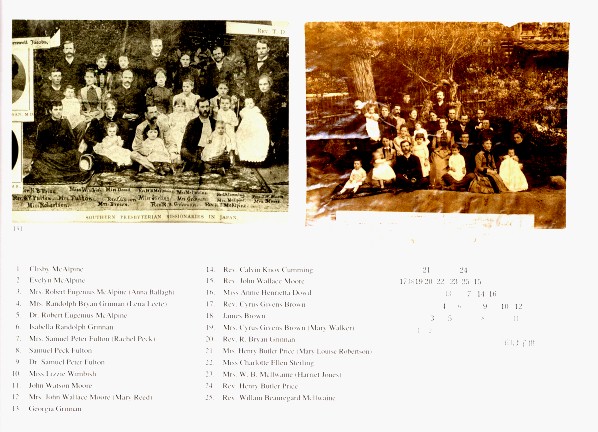
Arima Onsen 1902
The pictures above are Japan Mission pictures taken at Arima Onsen. These may to be the first pictures made of the complete mission. But they are incomplete! Annie Randolph should be in these pictures but for some reason is absent! Is it because she was already too sick to make that trip? No one seems to know. 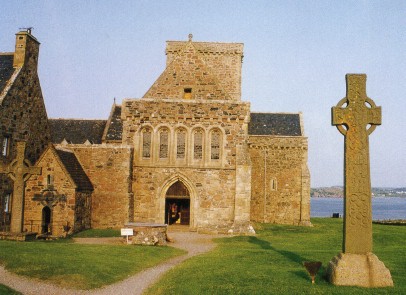
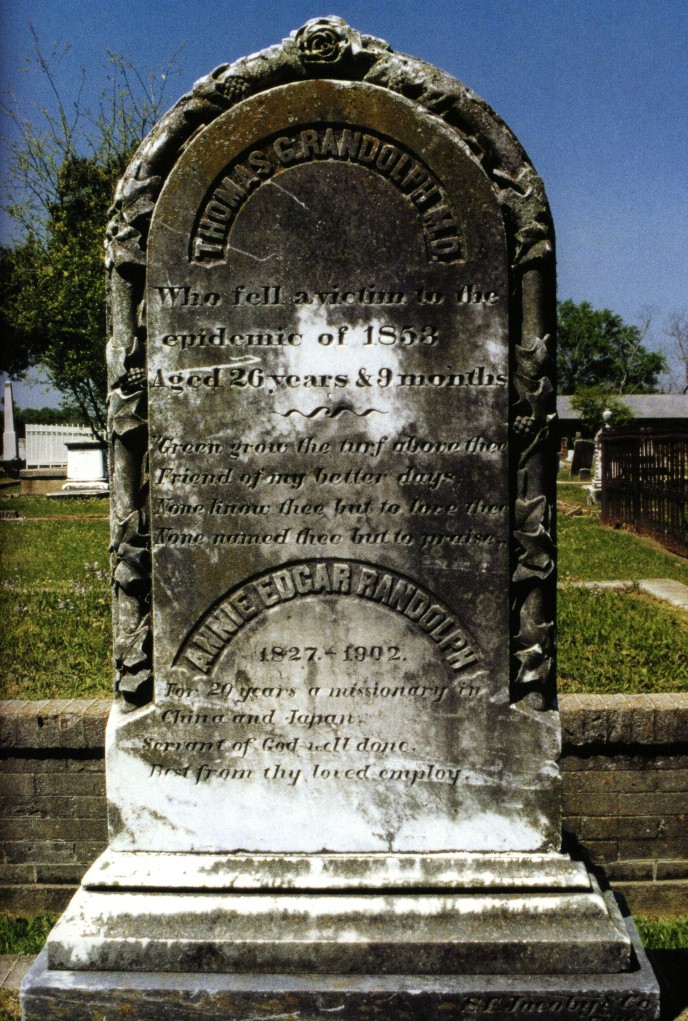
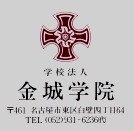

 To contact Mr. Sasa directly, sasa@jade.dti.ne.jp
To contact Mr. Sasa directly, sasa@jade.dti.ne.jp